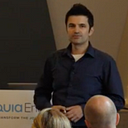A (deadly) 500-Million-Year Forecast
The Inevitable Dance of Continents and Climate
The next 500 million years will bring about changes so profound, so utterly transformative, that they challenge our very notion of what it means for a planet to be “habitable.”
The Great Continental Waltz
Imagine, if you will, a world where the familiar outlines of our continents have vanished, replaced by a single, massive landmass. This is not the fever dream of a mad geologist, but the very real future awaiting our planet. In approximately 250 million years, the Earth’s continents will complete their slow, inexorable dance across the globe, coalescing into a new supercontinent: Pangea Ultima.
This grand reunion of land masses is not merely a cosmetic change. Oh no, dear reader, it heralds a transformation so profound that it will rewrite the rules of life on Earth. As the continents merge, vast inland deserts will sprawl across the heart of Pangea Ultima, turning much of the land into an inhospitable wasteland.
The Sun’s Relentless Embrace
But wait, there’s more! As if the reshaping of our planet’s surface wasn’t enough, the sun itself will join this cosmic ballet of destruction. Over the next 500 million years, our once-friendly star will gradually increase its output, bathing the Earth in ever-greater amounts of heat and radiation.
The numbers, dear reader, are nothing short of staggering. Global temperatures are predicted to soar by a whopping 15°C above pre-industrial levels. And that’s just the average! On land, we’re looking at increases of up to 30°C. To put this in perspective, the last time Earth experienced such extreme heat was during the Permian-Triassic era, a period so catastrophic that it wiped out over 90% of all species.
The Great Baking of Earth
Now, you might be thinking, “Surely, life will find a way?” And while it’s true that life on Earth has shown remarkable resilience in the face of past cataclysms, the changes headed our way may prove too extreme even for the most adaptable of creatures.
Consider this: prolonged exposure to temperatures over 40°C will cause widespread collapse of vegetation. No plants means no food, and no food means… well, you can see where this is going. The food web as we know it will unravel faster than a cheap sweater in a washing machine.
But it’s not just about food. The very air we breathe will become our enemy. As the continents collide to form Pangea Ultima, volcanic activity will surge, belching vast quantities of carbon dioxide into the atmosphere. This greenhouse gas bonanza will further amplify the warming effect, creating a feedback loop of toasty terror.
The Twilight of the Mammals
Now, I know what you’re thinking. “But surely, we humans are the smartest, most adaptable species ever to walk the Earth! We’ll figure something out!” Oh, my sweet summer child. The harsh reality is that mammals, including us oh-so-clever humans, have a rather limited ability to adapt to heat stress.
The prolonged exposure to high temperatures that awaits us in this brave new world will be far beyond our tolerance levels. We’re talking about a planet where only 8% to 16% of the land surface remains habitable. The rest? A scorching, arid wasteland that would make Mad Max look like a quaint English garden party.
Just… give up then?
Now, you might be tempted to throw your hands up in despair. “If this is our inevitable fate,” you might say, “why bother with all this climate change hullabaloo?” But hold your horses, dear reader! This grim vision of Earth’s far future should not deter us from our present struggles. If anything, it should light a fire under our collectively warming bottoms.
The knowledge of these future extreme climate changes should serve as a clarion call, a rallying cry to address the current climate crisis caused by human activities. By reducing greenhouse gas emissions and mitigating the effects of climate change, we can ensure that the Earth remains habitable for as long as possible.
We currently inhabit a sweet spot in Earth’s history, a Goldilocks zone of habitability that we’d do well to preserve. The actions we take now will determine how long this window of opportunity remains open. Every degree of warming we prevent today buys us more time in the long run.
So, as we stand on the precipice of our planet’s long, slow march towards an unrecognizable future, let us not be paralyzed by the vastness of geological time. Instead, let us be spurred to action by the precious nature of our current moment. For in the grand sweep of Earth’s history, our time is but a blink of an eye — yet it is a blink that holds the power to shape the fate of countless generations to come.
In the face of such monumental changes, one might be tempted to succumb to nihilism. But I posit a different path: let us embrace the absurdity of our cosmic situation and fight all the harder for this pale blue dot we call home. For in the end, it’s not about winning a battle against inevitable change, but about cherishing and protecting the remarkable oasis of life we’ve been gifted, for as long as we possibly can.
After all, in a universe that seems hellbent on making life impossible, isn’t the very act of existence a form of rebellion? So rebel, dear reader. Rebel against the dying of the light. For even in the face of a 500-million-year forecast of doom, our actions today can still write a story worth telling.
Learn more about the way of the IT Architect:
Like the images in this article? (All of them were.) You can do that, too:
